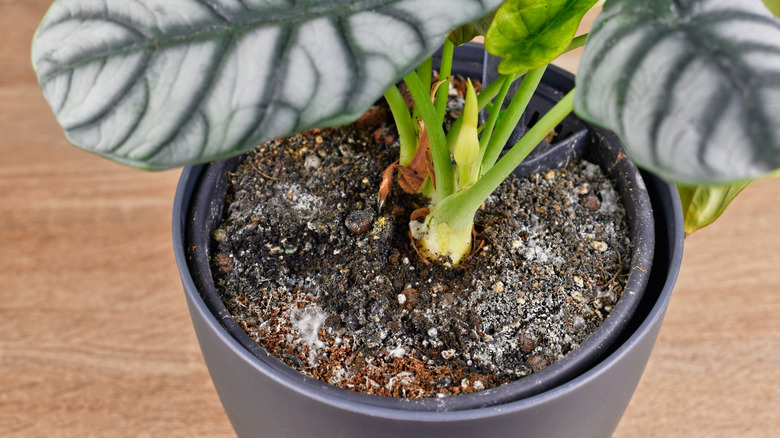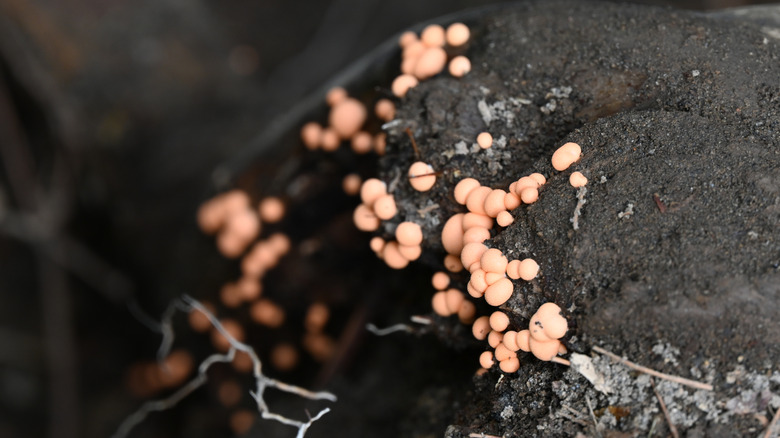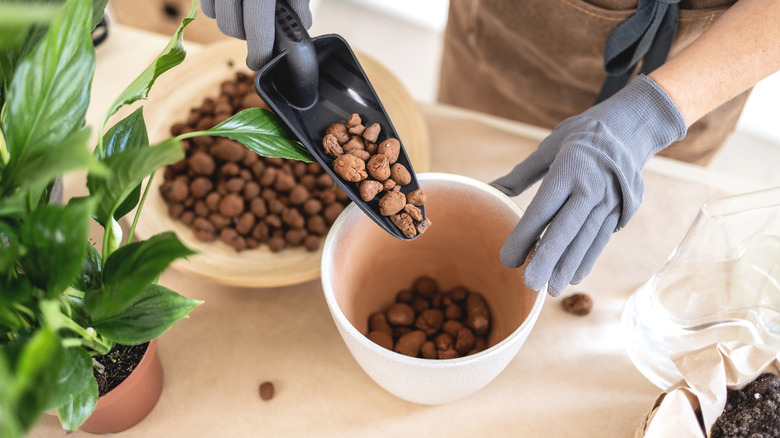Why There Is Mold In Plant Soil (& Types To Look Out For)
Very often, seeing unexpected mold inside your home is cause for alarm. It might ruin your food, clothes, walls, carpets, and more. Plus, it can be hazardous to your health. But when it comes to plant soil, the situation is quite different. It isn't necessarily bad for plants — in fact, they rely on certain types to thrive, but not all of them are friendly.
If you've ever bought potting soil or gardening soil with organic compost in it, chances are there was some type of mold in that mix. That's not so strange when you consider that it's simply a type of fungus, and fungi and plants are often mutually beneficial in nature. In the case of household plants, they help break down organic matter and make nutrients more accessible. They can also improve the structure of the soil and make plants more resilient. Some beneficial species can even prevent other harmful ones, such as the kinds that lead to root rot.
If you see mold on the surface of your plant's soil, it might be one of the helpful types that won't harm the plant. Still, a visible layer can be a sign that something is off, like poor drainage, a lack of air circulation, or too frequent watering. Abundant mold can be unattractive, produce a musty smell, or encourage pests like pesky gnats on houseplants. In some cases, it can trigger allergies or cause other health issues. That's why it's important to identify the type of mold you're dealing with and look for other issues before deciding how to proceed.
Common types of mold in plant soil
Beneficial molds that help break down organic matter in the soil are called saprophytic fungi. One of the most common is Trichoderma, which appears as white fuzzy clumps. Blue, yellow, and orange spots are also likely to be various types of saprophytic molds, such as slime mold. These aren't usually cause for concern plant-wise, but can still be removed for aesthetics' sake.
Green mold could be Aspergillus, Penicillium, or Cladosporium. While these also help decompose organic matter, they're common to households and you may not want them indoors lest they spread to other places. They can cause allergies or other health problems. Similarly, black, gray, or dark green spots may be sooty mold, which is harmless to plants unless it grows out of control since it's also a common allergen. Cladosporium can also be black, gray, or brown.
Some types of mold are difficult to spot in the soil and may not be noticed until they spread to the plant's foliage. Also, not every strange-colored spot on the soil is mold. It could be a mineral deposit, such as limescale, particularly if the surface of the soil is dry instead of wet. Green algae can also look mold-like on the soil's surface. It can be identified by its slimy appearance when wet and powdery texture when dry.
How to get rid of mold in plant soil
If you want to remove visible mold from plant soil, you can simply scoop it out with a small shovel or wipe it away with a damp paper towel. To discourage further growth, aerate the soil to break it up and help the soil dry out. Try watering less often and improving the plant's drainage. Check that the drainage holes are clear and consider adding a layer of rocks to the bottom of the pot. Adding perlite, sand, vermiculite, peat moss, or wool pellets can also help make the soil less mold-prone.
If the mold is problematic or has spread to the pot or plant, you can take more extensive steps. Move the plant to a different, clean container. Don't reuse the soil; use an entirely new mix to avoid transferring mold spores over. While you're at it, check the roots for rot (another common side effect of overwatered plants) and trim away any affected sections.
Store-bought fungicides are an option if necessary, but be careful with which plants you use them on since some plants are sensitive to them. Instead, cinnamon may be the secret to banishing mold on plant soil — just apply a thin layer on top. Baking soda can also be helpful, but apply it sparingly to avoid overloading the plant with sodium.


